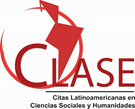Programa de intervención breve para reducir el burnout en profesionales de la salud, Perú
Resumen
Estudios realizados en el último quinquenio, revelan que la prevalencia del burnout se está incrementando en los profesionales sanitarios. Los objetivos de la investigación fueron describir las fases y niveles de las dimensiones del SB y determinar los efectos de un Programa de Intervención Breve (PIB) sobre el burnout de los profesionales de la salud de dos hospitales del Ministerio de Salud (Ancash, Perú). Es un estudio de enfoque cuantitativo, aplicado y de diseño pre-experimental. La población estuvo conformada por 60 profesionales y en la intervención participaron cinco profesionales con burnout fase intermedia y final. Se utilizó el MBI Inventario “Burnout” de Maslach, cuyas propiedades psicométricas fueron adecuadas (confiabilidad, alfa de Cronbach =0.85; índice de validez de contenido, Lawshe =1.00). El PIB se enfocó en la enseñanza de estrategias conductuales, cognitivas y emocionales de afrontamiento del burnout. Los Resultados indican que el PIB logro revertir las fases intermedia y final del burnout hasta la fase inicial, y disminuir los niveles altos de sus dimensiones: cansancio emocional y baja realización personal; pero los cambios no fueron significativos. Se concluyó que el PIB es económico, efectivo y eficiente.
Palabras clave:
Programa de intervención breve, burnout, fases.
ABSTRACT
Studies conducted in the last five years, reveal that the prevalence of burnout is increasing in healthcare professionals. The objectives of the research were to describe the phases and levels of the SB dimensions and determine the effects of a Brief Intervention Program (BIP) on the burnout of health professionals from two hospitals of the Ministry of Health (Ancash, Peru). It is a research of quantitative approach, applied and pre-experimental design. The population was made up of 60 professionals and five professionals with intermediate and final phase burnout participated in the intervention. Maslach's "Burnout" Inventory MBI was used, whose psychometric properties were adequate (reliability, Cronbach's alpha = 0.85; content validity index, Lawshe = 1.00). The BIP focused on teaching behavioral, cognitive and emotional coping strategies for burnout. The results indicate that the BIP managed to reverse the intermediate and final stages of burnout until the initial phase, and decrease the high levels of its dimensions: emotional fatigue and low personal achievement; but the changes were not significant. It was concluded that BIP is economic, effective and efficient.Keywords:
Brief intervention program, burnout, phases.Descargas
Publicado
Cómo citar
Número
Sección
Licencia
La editorial "Universo Sur", de la Universidad de Cienfuegos, publica el contenido de la Revista "Universidad y Sociedad" bajo una Licencia Creative Commons Atribución-NoComercial-SinDerivar 4.0 Internacional.
© Podrá reproducirse, de forma parcial o total, el contenido de esta publicación, siempre que se haga de forma literal y se mencione la fuente.









